Free home visits
with a local audiologist
If you are on the lookout for a hearing aid, the right one for you depends on a few factors, such as your level of hearing loss, your lifestyle, dexterity and other concerns. The main thing to remember is that modern hearing aids come in two types and many different styles. These types are Behind the Ear (BTE) hearing aids and In the Ear hearing aids (ITE).
One of the questions that we get asked most often is: ‘What type of hearing aid should I choose?’ There is no single answer to this question, as every hearing aid user is different. Below we go through the different types of hearing aids available and how they work.
We hope this page goes in some way to finding out which hearing aid style might suit you best, as we go through the types of hearing aids pros and cons.
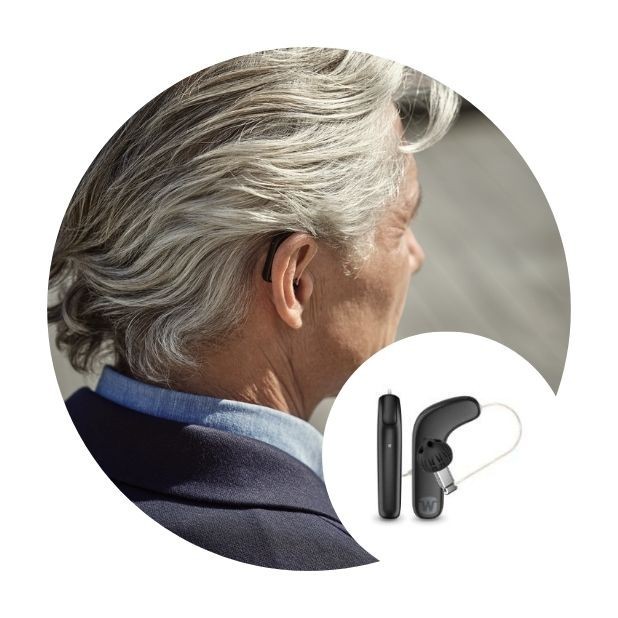
This type of hearing aid can also be called Receiver In-Ear (RIE) and is one of the most popular types of hearing aid on the market.
They are based on the classic Behind the Ear (BTE) design, but the receiver/speaker sits directly in the ear canal, with the microphone and processor sitting in a separate casing behind the ear, the two being connected with a thin and inconspicuous tube or wire.
This, combined with the fact that instead of the traditional Behind the Ear (BTE) ear mould, Receiver In Canal hearing aids (RIC) feature an open dome that crucially does not block or occlude the ear canal.
Advantages: Come in a rechargeable option, wireless connectivity and can incorporate innovative technology like artificial intelligence (AI).
Disadvantages: The smaller hearing aid models can be a problem putting in for those with dexterity problems and the device or wire is visible.
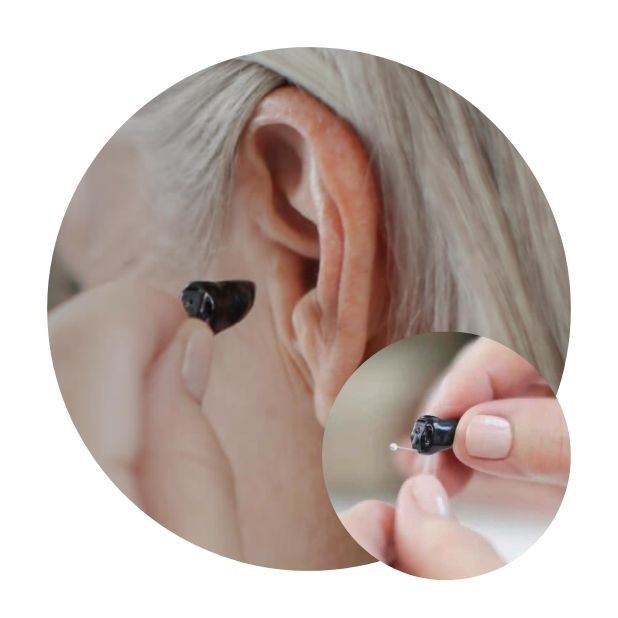
This type of hearing aid fits neatly into your ear canal meaning that it is very inconspicuous and discreet. They are custom-made from a mould of your ear meaning that they are also very comfortable to wear.
Their smaller size means that they are able to include slightly less functionality and power than larger aids so are suitable for people with slight to moderate hearing loss.
Advantages: Discreet and good sound quality due to the fit.
Disadvantages: Can increase ear wax, hard for those to put in if dexterity is an issue and sometimes they are unable to connect wirelessly due to the size.
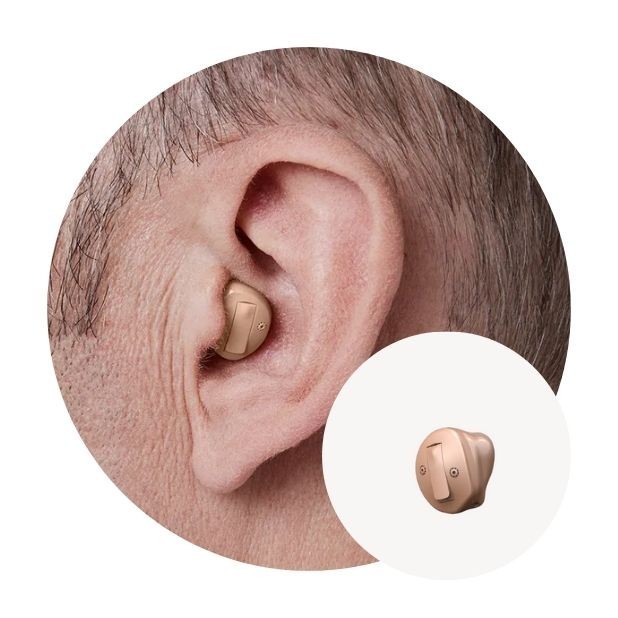
Slightly smaller than In the Ear (ITE) hearing aids, In the Canal (ITC) hearing aids are also sometimes known as Half Shell hearing aids. These are designed to fit just into the entrance of the ear canal.
This means that they are less conspicuous and depending on your remaining level of hearing can be used as more of a support to that, as more of the ear bowl itself is left open thus allowing your ear to continue to perform its residual functionality.
Advantages: Discreet, often has a long battery life and has more features than the smaller models (IIC and CIC).
Disadvantages: Can increase ear wax, give you more occlusion and you can get that "plugged-up" feeling. Plus, due to the size, sometimes wireless connectivity isn't possible.
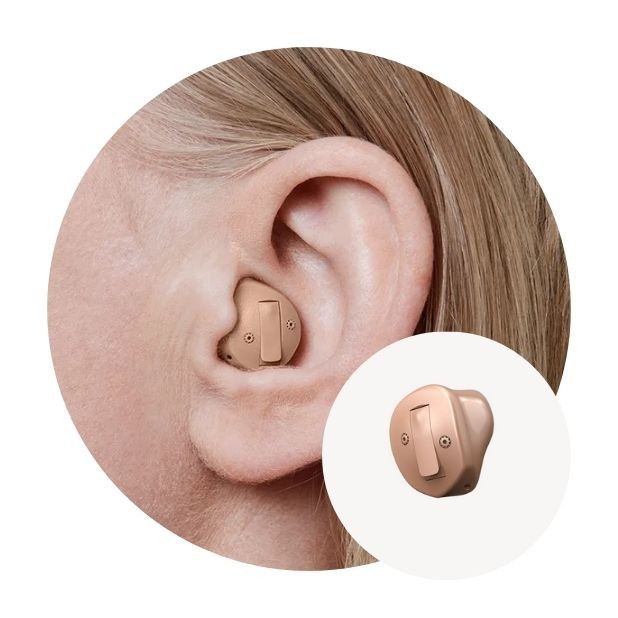
Also known as full shell hearing aids, this type of hearing aid is designed as a single unit that completely fills the outer ear. They are probably one of the most visible types of hearing aids.
However, they are also one of the most simple to operate as they can feature a range of onboard controls for changing volume, switching programmes etc.
Their larger size means that functions such as battery replacement are much easier and they can hold the larger battery types, meaning that In the Ear hearing aids (ITE) can be a great choice for people with dexterity issues or those who need a high-powered hearing aid.
Advantages: Because it is larger than other In-Ear models they are easier to put in and take out. They also often come with more features, control settings and wireless connectivity.
Disadvantages: They are less discreet than smaller In-Ear models, can bring more occlusion and give you that "plugged-up" feeling.
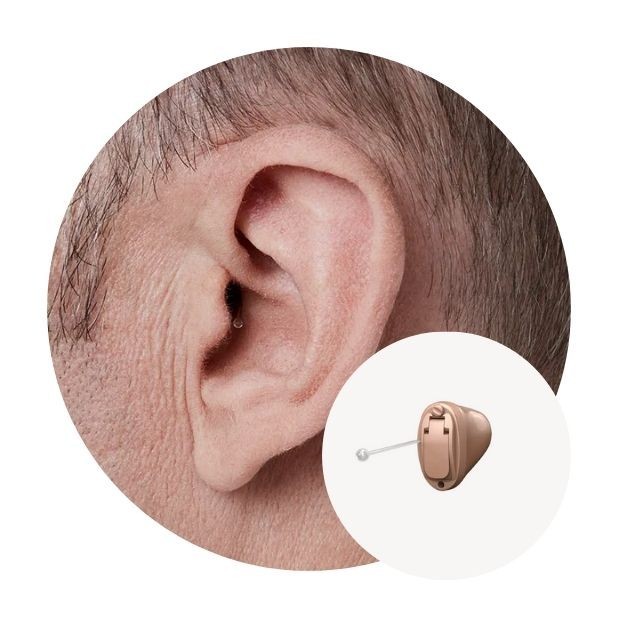
Invisible In the Canal (IIC) hearing aids are just as their name suggests and are almost completely invisible when worn.
They sit deeper in the ear canal than Completely In the Canal (CIC) hearing aids meaning that the only way that someone would know that you are using a hearing aid is that your hearing is better!
They are made from a custom mould of your inner meaning that they are also extremely comfortable to wear.
Advantages: Discreet and good sound quality due to the fit.
Disadvantages: Can increase ear wax, hard for those to put in if dexterity is an issue and sometimes they are unable to connect wirelessly due to the size.
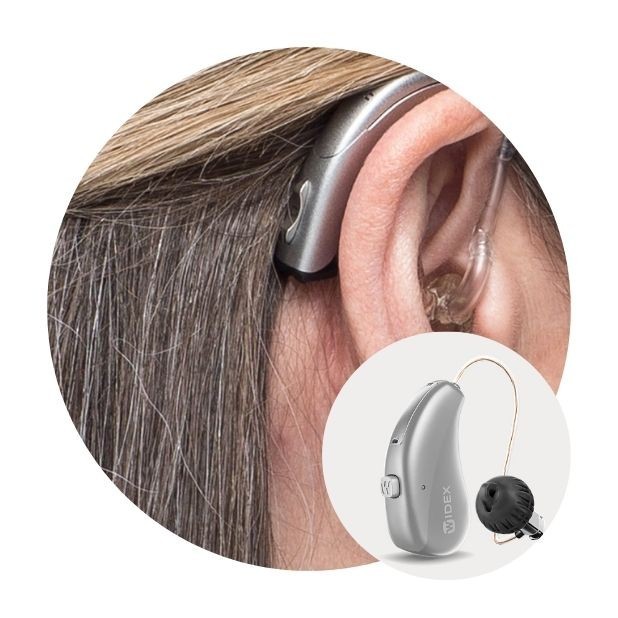
What are the types of BTE hearing aids? Behind the Ear hearing aids, sometimes referred to as BTE hearing aids are probably the most traditional form of hearing aid available. However, don’t let this make you think that they can not be at the forefront of modern hearing aid technology.
They have a case that sits behind the ear (hence the name) which is connected to a custom-made ear mould. Far from the traditional image of a clunky conspicuous design, Behind the Ear (BTE) hearing aids are now much smaller than you might think and many come in a range of colours to blend seamlessly with your hair/skin tone.
Advantages: Suitable for all hearing loss levels, includes wireless technology, often comes with a telecoil, sometimes has rechargeable options and you have the option of a custom-fit earmold.
Disadvantages: Can give more occlusion, you can get that "plugged-up" feeling, they are visible and they might be annoying for those who wear glasses due to the wire.
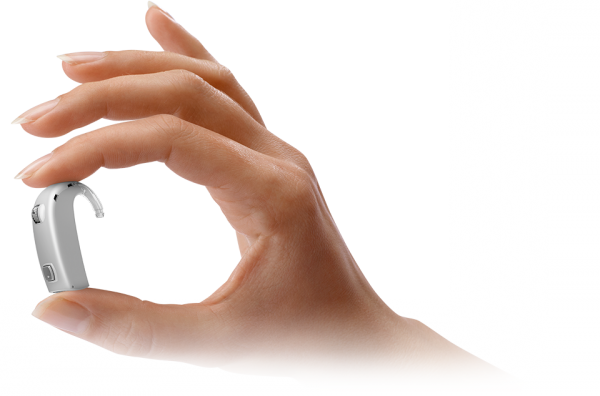
Super Power hearing aids are designed to help those with severe to profound hearing loss, for whom traditional hearing aids have been able to offer very little assistance. Their design is similar to a Behind the Ear (BTE), or sometimes Receiver in Ear (RIC) hearing aid, but usually features a full ear mould and a larger receiver.
This allows for greater power and amplification of sound but without the issues of feedback that high-powered hearing aids have previously been troubled with.)
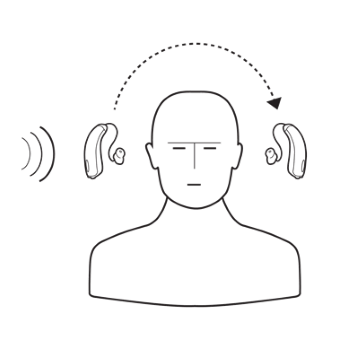
There are two separate hearing aid solutions for single-sided deafness and these are called CROS hearing aids or BICROS hearing aids. A BICROS hearing aid is for people who have one deaf ear and one ear with hearing loss.
A CROS hearing aid is for people with one deaf ear and one good ear.
It's important to note that the suitability of each hearing aid type depends on factors such as the severity of hearing loss, ear anatomy, personal preferences and the recommendations of an audiologist or hearing healthcare professional.
Our audiologists can guide you in selecting the most appropriate type of hearing aid based on your specific needs. You can view our hearing aid types and costs here and look at some of the best hearing aids of this year in our article here
Call us free on 0800 567 7621 to talk with one of our audiologists about which style of hearing aid devices would be right for you, your lifestyle and your hearing loss.
Do not spend hundreds of pounds without getting a second opinion from us.
 Not only are the prices great, but the service is fantastic! Many thanks to your team.
Not only are the prices great, but the service is fantastic! Many thanks to your team.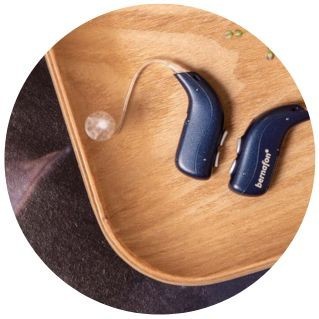
There are several types of hearing aids available today, each designed to address specific hearing needs and preferences. Here are some common types:
Earmoulds for hearing aids come in various types, each catering to different hearing needs and preferences. Choosing the right earmold is crucial for both comfort and optimal hearing aid performance. Such as:
Hearing aid domes, the small attachments at the tip of hearing aid receivers or tubing, are available in several types to suit various hearing needs and comfort preferences. Such as:
| Invisible hearing aids | ► View our invisible hearing aids article |
| Types of hearing aids and cost | ► View all our hearing aid prices |
| How do hearing aids work? | ► Read about hearing aids work |
| Smallest hearing aids | ► View our world's smallest hearing aids article |
| Best hearing aid providers | ► Read the latest hearing aids Which Report |
| Using hearing aids | ► Discover our hearing aid maintenance hub |
| Hearing aid technology | ► Read about the latest hearing aid technology |
| Types of hearing aids for tinnitus | ► Explore hearing aids for tinnitus |
| Types of hearing aids for severe hearing loss | ► Read our powerful hearing aids article |
What types of hearing aids are available on the NHS? When looking at NHS hearing aid types, the NHS does not generally offer In-Ear hearing aid models. They mostly offer Behind-the-Ear types of NHS hearing aids.
Click here to view more information about the types of hearing aids NHS provides and compare them to private hearing aids.
The Invisible-in-canal (IIC) hearing aid is the most invisible style available. This is because they are small and sit deep inside the ear canal.
They are less discreet than smaller In-Ear models, can bring more occlusion and give you that "plugged-up" feeling.
How many types of hearing aids are there? Healthcare professionals classify hearing aids into five categories: Behind-the-Ear (BTE), In-the-Ear (ITE), Receiver-in-the-Ear (RITE), In-the-Canal (ITC), and CROS/BiCROS.
When we refer to a product as 'Latest Launch', we mean it is the latest to be released on the market.
When we refer to a product as 'New', we mean that the product is the newest hearing aid model on the market.
When we refer to a product as 'Superseded', we mean that there is a newer range available which replaces and improves on this product.
When we refer to a product as an 'Older Model', we mean that it is has been superseded by at least two more recent hearing aid ranges.